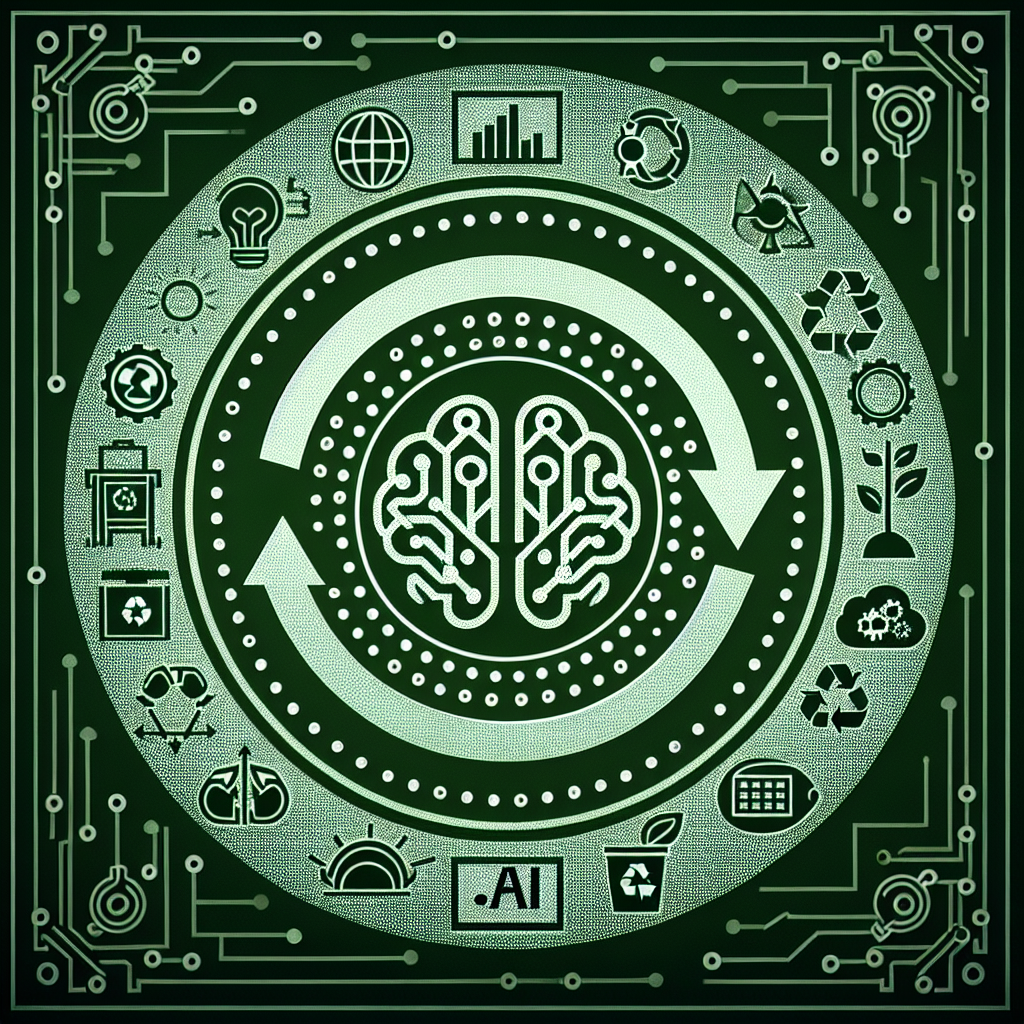The Circular Economy 4.0: AI-enabled Solutions for a Greener Tomorrow
In recent years, the concept of the circular economy has gained traction as a sustainable alternative to the traditional linear model of production and consumption. The circular economy aims to minimize waste and maximize resource efficiency by keeping products and materials in use for as long as possible through recycling, reusing, and remanufacturing. With the rise of artificial intelligence (AI) technology, the circular economy is entering a new phase, known as Circular Economy 4.0.
Circular Economy 4.0 combines the principles of the circular economy with the power of AI to create innovative solutions for a greener tomorrow. AI-enabled technologies are being used to optimize resource management, improve product design, enhance recycling processes, and enable smarter decision-making throughout the value chain. From predictive maintenance in manufacturing to smart sorting systems in recycling facilities, AI is revolutionizing the way we approach sustainability.
One of the key benefits of Circular Economy 4.0 is its ability to unlock new opportunities for businesses to reduce their environmental impact while also driving economic growth. By adopting AI-enabled solutions, companies can streamline their operations, lower costs, and create value from waste streams that were previously considered unprofitable. This not only helps to protect the environment but also enhances the competitiveness of businesses in a rapidly changing market.
AI-enabled solutions for the circular economy are already being implemented across various industries, from manufacturing and logistics to retail and consumer goods. Here are some examples of how AI is revolutionizing the circular economy:
1. Predictive Maintenance: AI algorithms are being used to predict when machinery and equipment will require maintenance, helping to prevent breakdowns and reduce downtime. This not only saves costs for businesses but also extends the lifespan of assets, reducing the need for new resource extraction.
2. Smart Recycling: AI-powered sorting systems are improving the efficiency of recycling facilities by automatically identifying and sorting different types of materials. This reduces contamination and increases the quality of recycled materials, making them more valuable for manufacturers.
3. Circular Design: AI tools are helping designers and engineers to create products that are easier to disassemble, repair, and recycle. By considering the end-of-life phase at the design stage, companies can reduce waste and improve resource efficiency.
4. Supply Chain Optimization: AI algorithms are optimizing supply chains by predicting demand, reducing excess inventory, and minimizing transportation emissions. This not only reduces costs for businesses but also lowers their environmental footprint.
5. Consumer Engagement: AI-enabled platforms are empowering consumers to make more sustainable choices by providing information on the environmental impact of products and services. This helps to raise awareness and drive demand for circular solutions.
While Circular Economy 4.0 offers promising opportunities for a greener future, there are also challenges that need to be addressed. One of the main concerns is the potential for AI technologies to exacerbate existing inequalities and create new forms of environmental harm. It is essential for policymakers, businesses, and civil society to work together to ensure that AI is used responsibly and ethically in the transition towards a circular economy.
FAQs
Q: What is the circular economy?
A: The circular economy is a regenerative economic model that aims to minimize waste and maximize resource efficiency by keeping products, materials, and nutrients in use for as long as possible through recycling, reusing, and remanufacturing.
Q: What is Circular Economy 4.0?
A: Circular Economy 4.0 combines the principles of the circular economy with the power of AI technology to create innovative solutions for a greener tomorrow. AI-enabled solutions are being used to optimize resource management, improve product design, enhance recycling processes, and enable smarter decision-making throughout the value chain.
Q: How is AI revolutionizing the circular economy?
A: AI is revolutionizing the circular economy by unlocking new opportunities for businesses to reduce their environmental impact while also driving economic growth. AI-enabled technologies are being used to streamline operations, lower costs, and create value from waste streams that were previously considered unprofitable.
Q: What are some examples of AI-enabled solutions for the circular economy?
A: Some examples of AI-enabled solutions for the circular economy include predictive maintenance, smart recycling systems, circular design tools, supply chain optimization algorithms, and consumer engagement platforms.
Q: What are the challenges of Circular Economy 4.0?
A: One of the main challenges of Circular Economy 4.0 is the potential for AI technologies to exacerbate existing inequalities and create new forms of environmental harm. It is essential for stakeholders to work together to ensure that AI is used responsibly and ethically in the transition towards a circular economy.

